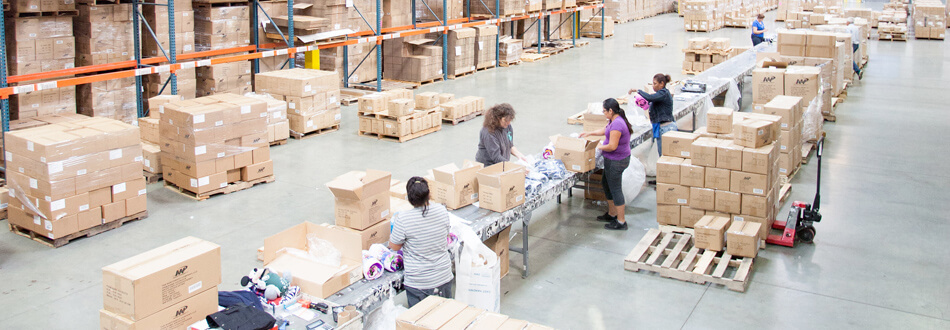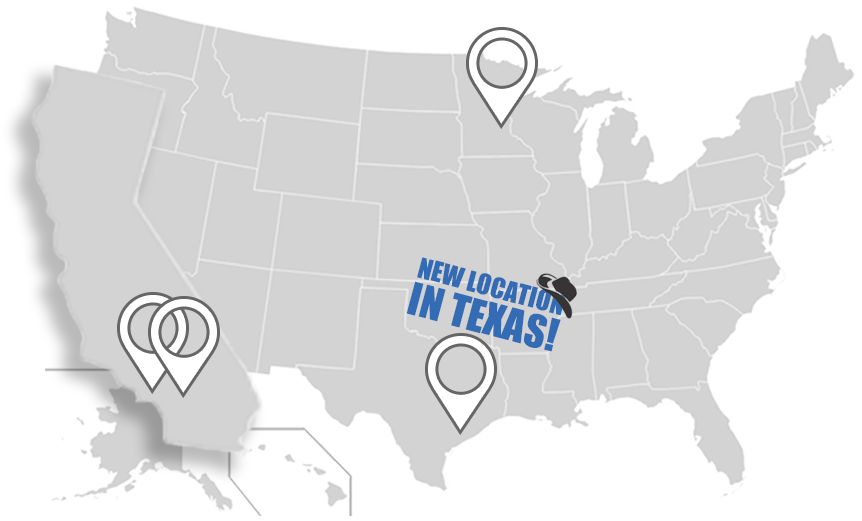Manual labor accounts for more than half (55%) of total warehouse costs. Part of that is because of how tedious picking and packing can be, with three-fifths (60%) of the time it takes consumed by moving products and walking.

Pick and pack becomes especially labor-intensive when grabbing individual items from different places and putting them straight into shipping cartons (as opposed to picking cases or full pallets) — a process called split case picking, piece picking, each-pick, or broken case picking.
The challenges of this newer approach to picking are driving 3PL warehouses to optimize the operation for accuracy, efficiency, and speed. Key metrics used to evaluate models and technologies for piece picking include throughput, acquisition cost, cost of ownership, space utilization, storage density, and velocity (the pace at which inventory is moving).
4 common models of split case picking
There are various ways to approach piece picking. Evaluation of specific approaches will have to do, in part, whether picking is performed by item or by order. In the case of the former, sorting must occur downstream, while that step is not needed with the latter.
Various models of split case picking are as follows:
#1. Discrete order picking (a.k.a. basic order picking)
The most frequently used and most easily understood form of picking, discrete order picking is highly suitable when picking is paper-based. Unfortunately, it is also quite inefficient since travel time exceeds that of other options.
This approach involves one order-picker going line by line, picking an order. Orders can typically be picked at any time on the given day, since generally each shift has a single window for scheduling orders.
#2. Batch picking (a.k.a. multi-order picking)
Small batches are created by picking numerous orders simultaneously. Depending on the environment’s average picks per order, batches will typically include 4 to 12 orders. Pickers can make multiple picks in one area of the warehouse, significantly decreasing travel time when there are few picks per order in an operation.
Procedures and systems are needed so that orders are not mixed up, since more than one are being picked together. A consolidated pick list is used by an order picker to take a single pass and pick all the orders. Often the picking cart that is used will be multi-tiered, with each order designated its own carton or tote. For optimal consolidation of orders that include similar items, sophisticated logic is commonly incorporated into batch picking systems.
Orders build up in the system until the batches are able to be formed out of similar picks. While this delay greatly improves batch pick productivity, it does not work for many same-day shipping operations.
Using pick trolleys, batch picking can be conducted cost-effectively in a non-automated environment. Automated material handling equipment and zone picking are often used alongside batch picking in high-volume operations.
#3. Zone picking
Fans of basketball are likely familiar with zone defense, in which a player is responsible for a certain section of the floor. The same principle can be applied to picking. With zone picking, the warehouse is chopped up into a number of zones, with certain SKUs belonging to each of them. When an order picker comes in for a shift, they only pick within one zone.
To make sure the flow is consistent, it is critical to balance the number of picks in each zone. Typically there are one or two pickers in each zone (which, in turn, helps determine the size of the zones).
There are two different types of zone picking, which each address the need to combine items from numerous zones differently:
- Simultaneous zone picking, a.k.a. pick and merge – With this model, the different zones are picked concurrently. A packing station is then used to consolidate pieces from the various zones.
- Sequential zone picking, a.k.a. pick and pass – In this system, order boxes are moved from zone to zone, often via a conveyor belt. Rather than consolidation of zones at a packing station, the items of each zone are added one at a time. Strong productivity with this model is highly dependent on locating particularly fast pick areas near the conveyor.
The speed of order fulfillment is optimized by pick and merge, due to its parallel structure. Whether that system or pick and pass is used, very busy operations can benefit from a decline in picker congestion. A downside is that zone picking is a costlier model than batch picking.
#4. Wave picking
In this model, the order picker focuses on one SKU and one order at a time, just like discrete picking. With wave picking, the processes of picking, packing, and shipping are better coordinated through scheduling windows. This model allows order scheduling so that picking occurs during specific times of day.
Comparison table
The following table compares the different methods in terms of order volume and number of picks per order:
| Total orders | Picks per order | |
| Discrete order picking | low | moderate to high |
| Batch picking | low to high | low |
| Zone picking | moderate to high | low to moderate |
| Wave picking | low to high | moderate to high |
9 technologies sometimes used for split-case picking
Along with determination of a picking model, 3PL fulfillment companies can also utilize various technologies:
#1. Vertical lift modules (VLMs)
An automatic extractor/inserter accesses columns of trays at the front and rear of the equipment, in which medium- and slow-moving cases and items are stored. To better utilize space, the stored positions of trays are adjusted dynamically via integrated controls, using sensors to evaluate each tray and gauge how tall items are.
#2. Pick-to-light
The aisles and shelves that pickers should access are illuminated via light guiding.
Unfortunately, in operations with many pickers, this system can be confusing. We deployed it in the past but ultimately determined its restrictions outweighed its benefits.
#3. Floor robots
These automated guided vehicles typically grab racks with inventory and move them to stations where pickers select specific items. This solution, in which capacity is expanded over time through the acquisition of more robots, is intended to enhance storage density.
A downside of these solutions is that they are costly, in part because of initial programming and ongoing maintenance.
#4. Horizontal carousels
The technology is designed for use in picking cases and items that are moving at a slow to medium rate. The solution consists of an oval track, transporting items to pickers via a number of horizontally rotating bins. To achieve optimal throughput and productivity, a workstation or pod will often have various integrated horizontal carousels.
#5. Vision picking
This technology is used to enable a hands-free environment. Outfitted with augmented reality (AR) glasses, pickers can scan item tags automatically. They are directed where to go and what items to pick.
#6. Automatic storage and retrieval systems (ASRSs)
The selling point for these solutions, capable of accessing racks as high as 100 feet, is that they bolster storage density. However, retrieval times can be long, and they are quite expensive.
Rows of racks make up an ASRS, with a retrieval unit for every row. The retrieval unit puts away items and picks products, moving along the rack horizontally and vertically. One primary category of this technology is the unit-load type, which stores and moves sizable unitized loads (such as pallet loads). The other is the mini-load type, which stores and moves bins or trays of items.
#7. A-frame
Besides replenishment, no labor is needed for this technology. Portable versions are sometimes used seasonally or during promotions.
The A-frame standardly offers three automated picking and dispensing modes: pick-to-shipper, pick-to-tote, and pick-to-belt.
#8. Voice picking headsets
A hands-free, paperless environment is enabled by this technology: products are picked with verbal confirmations. Headsets are used to guide pickers to the correct aisles, shelves, and items.
#9. RFID or barcode scanners
To double-check accuracy, packers can scan the RFIDs or barcodes with these devices. To make sure that they are grabbing the correct items, mobile scanners can be useful to pickers too. This versatile technology can also be used in order checking, cutaway, pallet loading, and case picking.
We use scanners and find them to be highly effective.
Finding a trusted 3PL provider
Are you in need of technically advanced 3PL fulfillment services for expert split case picking? At Distribution Alternatives, we have been distributing merchandise to the retail trade for more than 80 years.

